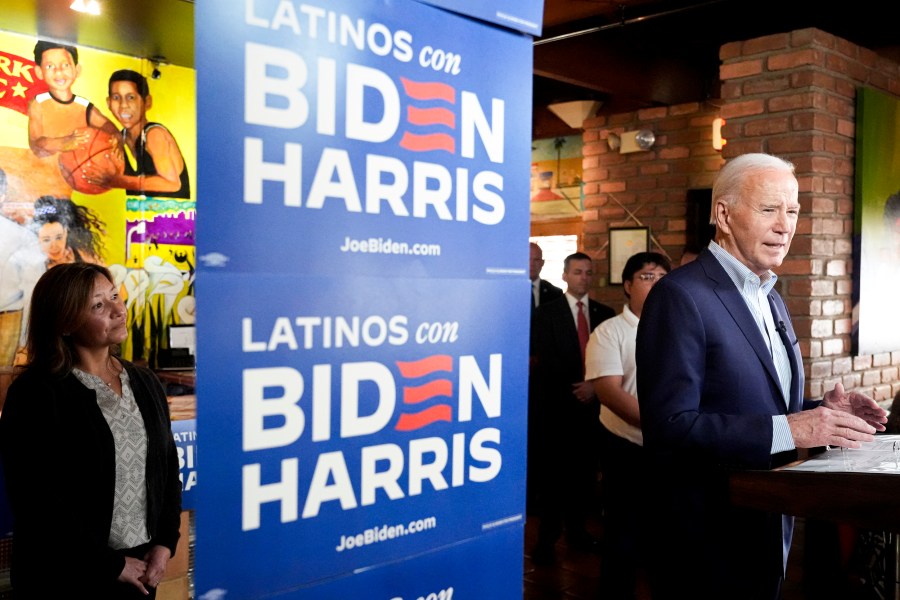President Joe Biden’s re-election campaign has been criticized for not being responsive to the country’s estimated 36.2 million eligible Latino voters. But the campaign can take some comfort in a new Pew Research poll released last week, which showed the incumbent creeping back to the 2020 levels of Latino support that helped put him in the White House.
Pew’s poll showed Biden winning 52% of Latinos to Donald Trump’s 44%, an increase from other national polls that had him with some of the lowest Latino support of any Democratic presidential candidate since Jimmy Carter’s defeat in 1980. In the 2020 election, as Pew noted with a validated voter analysis, 59% of Latino voters chose Biden, with Trump earning 38%.
Pew estimates there will be roughly 36.2 million eligible Latino voters by November 2024, which is 4 million more than in 2020.
Democratic dreams of Biden matching the 70% share of Latinos that Barack Obama and Bill Clinton achieved are unrealistic in 2024. He would be hard-pressed even to attain the 66%-28% advantage Hillary Clinton had over Trump in 2016. Still, closing a 7 percentage-point gap from one cycle to another this early in the campaign is quite achievable. And while Democrats have had recent challenges with outreach to Latinos, it’s clear that Latinos will be central to a Biden victory, especially in six key toss-up states: Pennsylvania, Michigan, Wisconsin, Arizona, Nevada and Georgia.
There are several factors to consider as to why such a scenario is plausible.
First, the number of new Latino voters continues to increase. Pew estimates there will be roughly 36.2 million eligible Latino voters by November 2024, which is 4 million more than in 2020. The expected 2024 Latino voter turnout is currently at around 17.5 million, which means that more than half of eligible Latino voters are persuadable.

As NBC News reported this week, “In the western U.S., which includes the battlegrounds of Arizona and Nevada, Latinos are nearly 4 of every 10 newly eligible voters — defined as those who have reached ages 18 or 19 since the 2022 midterms. In the South, Latinos are 24% of newly eligible voters, and in the Northeast they make up 19%.”
With so much in play, local outreach and messaging will be crucial in the fight to win over new voters and possibly bring some Latino voters back into the Democratic fold, especially in states like Pennsylvania, Michigan and Wisconsin. Although these states have Latino voter shares in the single digits (anywhere from 4% to 6%), a consistent campaign presence could make enough of a difference to win a state’s electoral votes.
The Republican National Committee has cut back dramatically on community centers aimed at increasing Latino voter support.
Second, Republicans have had their own troubles with Latino outreach. As first reported by The Messenger before that outlet shut down, the Republican National Committee has cut back dramatically on community centers aimed at increasing Latino voter support. Plans to revive its outreach efforts to Black and Latino voters have shuttered completely, according to The Daily Beast.

Subsequent reporting has Republicans questioning if the Trump campaign’s elusive push to win more Latino and Black support is just hyperbole. A story last Friday from The Keystone, a Pennsylvania-based outlet, said that while the Biden campaign opened up 10 offices across the state, “Republicans have been non-existent.” With the RNC’s closure of community centers, one former Allentown location is now a cash-checking store and another in Philadelphia is a child care center, the outlet reported.
In a statement to The Keystone, José Muñoz, a spokesperson for the Democratic Congressional Campaign Committee, said, “While Democrats are trying to meaningfully and thoughtfully engage with these voters, Republicans are only interested in a publicity stunt.”













